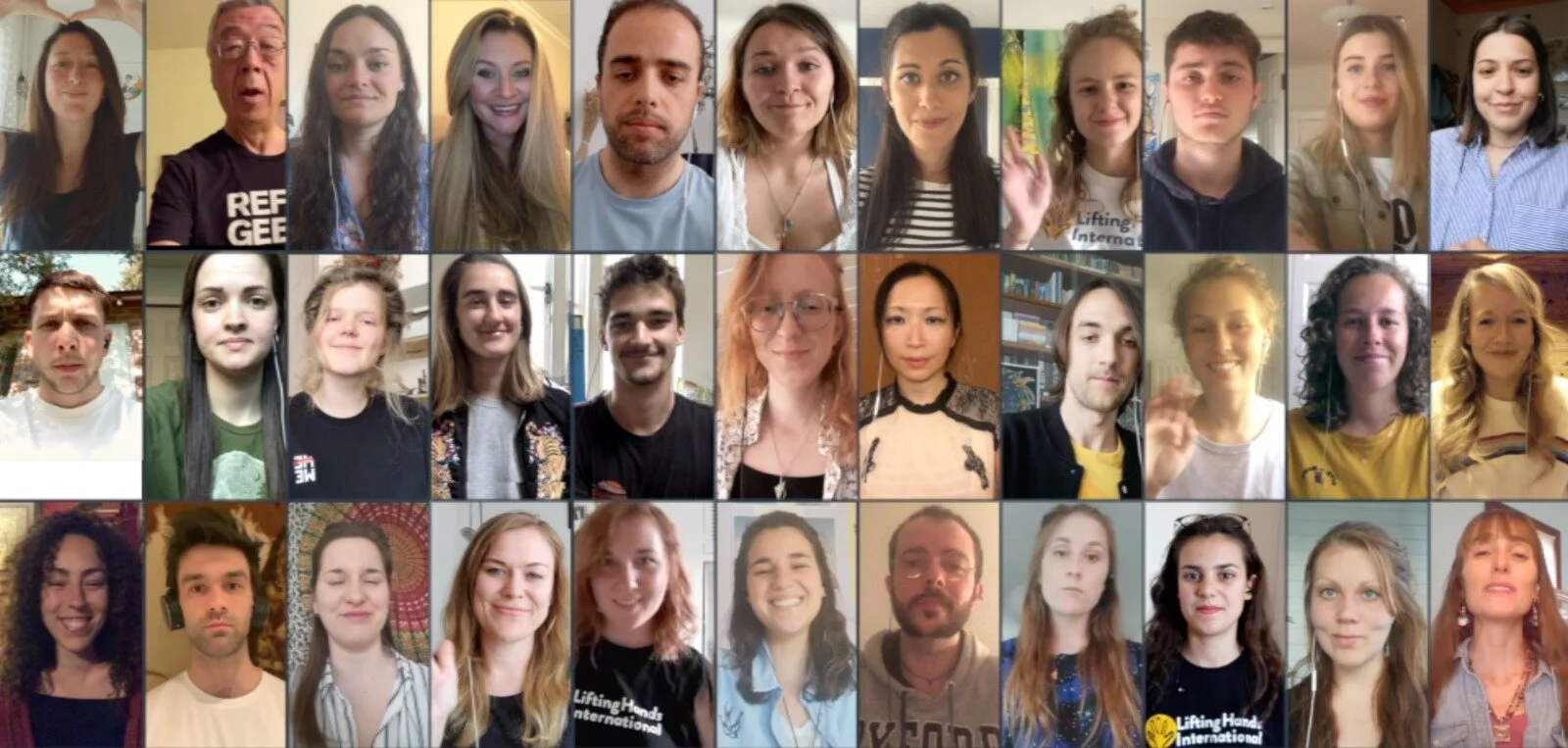Quarantined… in Greece!
by: Hayley Smith, LHI Founder/Director
The balcony view is so beautiful!
Hayley here, reporting from Serres, Greece. After one failed attempt at getting into the EU a few weeks ago, I’m certainly glad to be sitting here on the balcony of LHI team apartment 1 writing to you. Navigating the tricky EU ban on US citizens wasn’t easy, even with invoking the humanitarian exception to the ban. But here we are on day #3 of team quarantine!
Last night’s dinner on the balcony.
There are six of us in this quarantine set. We’ve got Iñigo from the Basque country Spain, Natalie from the Netherlands, Maddie from England, Jana from Germany, and Katie from Scotland. Apart from borrowing a bread pan from a distance, we’ve had zero contact with the team currently on the ground, let alone anyone else in Serres, in order to prevent the potential spread of COVID-19. It’s not easy for some of our team members to be in Greece and not be nursing an iced coffee!
You may suspect that I’m writing this post simply out of boredom, since 5 other volunteers and I have 11 more days of quarantine. But trust me, we are all excited to be here and tell you all about it, especially after months of lockdown. I’m even waiting to eat Iñigo’s homemade Spanish tortilla while writing this. (Spanish tortillas are baked omelettes with potatoes, and in Inigo’s recipe, onions).
Luckily, LHI tends to attract some of the nicest and smartest people in the world, so quarantine has been painless and pleasant. We take turns cooking for each other, play lots of card games, spend time soaking our feet in the river park (where there are very few people), and talk. We’ve tackled subjects anywhere from cooking to the Palestinian/Israeli conflict. Did I mention that it’s in the high-90s with high humidity and no air conditioning?
Card games get us through the day. And working on this blog post…
As pleasant a group as this is, we are keeping our eye on the prize, which is finally getting to work on the ground with the Yazidi refugees who come to the LHI Refugee Center to learn, to teach and to heal. We are ready and waiting.
Our own experiences with lockdown have given many of us the opportunity to develop more empathy for those in more difficult circumstances, such as our refugee brothers and sisters throughout the world who have been experiencing such struggles for years: useless passports, being confined to one location, canceled life plans, and perhaps the hardest thing, uncertainty about the future.
Jana (in the shorts) is a black belt in Tae Kwon Do. Natalie is not…
This being said, we can’t undermine our various struggles and suffering during this time. Whether we are in quarantine, managing restless kids doing online school, working on the front lines, living in refugee camps, etc., we’re all here for one another, and we will keep going!
Click here to learn more about our Refugee Center in Serres, Greece.





















































